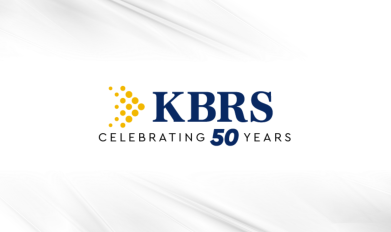Few would have predicted in March of 2020 the dramatic shift that was about to unfold in our workforces as a result of the global pandemic. When layoffs were announced by hard hit organizations, many expected increasing unemployment rates would offer employers greater choice of qualified candidates. However, fast forward to 2021 and we see a growing number of employers who lament at the increasing challenge to attract and retain the people and skills their organizations’ need.

Through our work in talent attraction and development we recognize that many of the challenges employers currently face predate the pandemic.
Skills gaps have persisted. A recent survey suggested that 87% of employers are struggling to fill positions as a result of skills gaps. While there may be thousands of unemployed people only a fraction have the most sought-after skills. Studies also suggest that only 16% of new hires have all the skills they need to prepare them for their current and future roles. It seems the pandemic has accelerated the need for new skills across a greater variety of organizations. For example, the ability to lead virtually has become an imperative for many leaders and the demand for the technical skills to deliver services in new ways is evident across almost every industry.
Top talent have choices. Employers are competing for the attention of people with the most desirable skills. Candidates may have more than one job offer making the most sought after professionals more challenging to attract and retain. In our experience, this reality has persisted throughout the pandemic and will likely remain for the foreseeable future.
Systemic barriers have led to underrepresentation of equity deserving groups. For years organizations have recognized a lack of diversity within leadership ranks and in many workplaces. While the topic of equity, diversity and inclusion was become increasingly important within organizations before the pandemic, the socio-political events of the past year have drawn further attention to inequities. In Atlantic Canada, where employers face an aging and shrinking labour market, attracting and retaining immigrants and improving workforce participation of underrepresented groups has made examining system barriers critical to future success.
While the pandemic has accelerated change in these areas it has also introduced new challenges and opportunities for both employers and employees.
Canadian employers are posting more jobs than before the pandemic. InDeed, a leading Canadian job board reported that job postings in June of 2021 exceed pre-pandemic levels by 23%. While many hard-hit sectors including hospitality and food preparation and service job postings continued to be disproportionately negatively impacted, sectors like construction, loading and stocking, nursing, and software development are up substantially in job postings.
The appetite for remote work and remote workforces has increased. Before the pandemic, only 82% of Canadian’s primarily worked in an external workplace. When assessed in June of 2020, only 27% of Canadians worked in an external workplace. The great work from home experiment has resulted in an increased in appetite for flexible, remote work arrangements. A growing number of employers are embracing this trend to engage new talent pools, reduce overhead, and meet evolving employee needs. Whether the experience has unlocked your appreciation for working from home or made you long for greater human connection, it is estimated that 70% of the workforce will work remotely 5 days a month by 2025.
Women have been disproportionately impacted. In fact, surveys suggest that 64% of the people who dropped out of the labour force between February and October of 2020 were women. In addition to women being highly represented in hard hit sectors, the demands of working from home while meeting family care needs have negatively impacted gains in workforce participation.
Pent-up turnover demand is now evident. A recent study by the Society of Human Resources Management suggests that organizations should anticipate 52% turnover in 2021, an increase from 2019 and 2020 when only 35% of employees suggested they expected to job hunt. Why the dramatic increase? Could it be the employees who intended to look for new opportunities before the pandemic held on through the uncertainty and are now resuming their hunt? Could it be a symptom of shifting priorities? Or could it be that jobs and organizations have changed to the point where employees no longer feel their work aligns with their needs? Whatever the reason, the shift is palpable.
Employee expectations have changed. KBRS recently conducted a survey of more than 300 professionals in our networks in which 80% indicated the pandemic had impacted their perspective on what is important in their work life. (70% of male respondents, 88% of female respondents). When asked what has changed the most, the common themes centered on work-life balance; flexibility and remote work options; the importance of relationships with family; friends and colleagues; and concerns with lack of personal connections or professional isolation. These shifts in priorities were echoed in what respondents indicated were the most important factors when evaluating a new career opportunity. While 45% of respondents included compensation in the top three factors they consider, 55% focused on other options. 44% included work-life balance in their top three factors, followed by interesting work (34%), values alignment with the organization (31%), opportunities to fully use skills and abilities (26%) and good relationships with management/supervisors (23%).
Faced with a challenging and changing talent landscape, how can employers adjust their talent attraction strategy to meet their needs?
Reassess your needs. A lot has changed in the last year. If you are experiencing high turnover it may be a good time to take a complete look at the skills you require rather than reproducing old job descriptions for newly vacant roles. Will the requirements of the past serve your organization well in the post-pandemic future?
Reconsider essential qualifications. Rather than focus on the “unicorn” candidate, take a closer look at the required skills for the job. Examine candidate potential rather than just credentials and experience. A long wish list of non-essential criteria may create unnecessary barriers, particularly for under-represented groups.
Reflect on barriers in your recruitment process and your organization. You may have obstacles that may have unintended consequences in your ability to attract diverse candidates and the decisions you may make about their “fit”. Reconsider how you can gather diverse perspectives in the decision making process to help mitigate unconscious bias. Create environments that encourage discussion and where people can respectfully challenge of decisions about who gets hired and promoted. Challenging bias and barriers is a collective effort.
Take a holistic approach to employee compensation and appreciation. While compensation remains an important factor in attracting and retaining people, it is only a part of the equation for most candidates. Employers need to consider an employee’s needs to create a compelling employment offer that demonstrates an appreciation for what the employee brings to the workplace.
Make work-life balance a priority. Recognize that the definition of work-life balance will vary for each employee. Achieving this elusive balance doesn’t necessarily mean boundless opportunities to work from home with unlimited flexibility of hours. It does tend to involve some level of agency to create boundaries as well as thoughtful accommodation so employees are able to preserve their personal lives and still balance the expectations of their work lives.
Plan to develop skills not just hire them. As surprising as it may seem coming from an organization that specializes in recruitment, the pace of change has made it absolutely necessary to be deliberate and supportive in ensuring employees develop the necessary skills. It simply is not realistic to expect every employee to have all the skills they’ll need to be successful now and into the future when they are hired.
We recognize, based on the conversations we have with leaders each day, that the last year has challenged the resilience of many leaders and organizations. However, it has also been a catalyst for important change in the way organizations work. Organizations that take a proactive approach in adjusting their talent strategy will be better positioned to endure future challenges and seize new opportunities.

Instrumental in the completion of hundreds of executive search assignments, Andrea’s commitment to providing strong strategic counsel and building lasting partnerships is evident.






